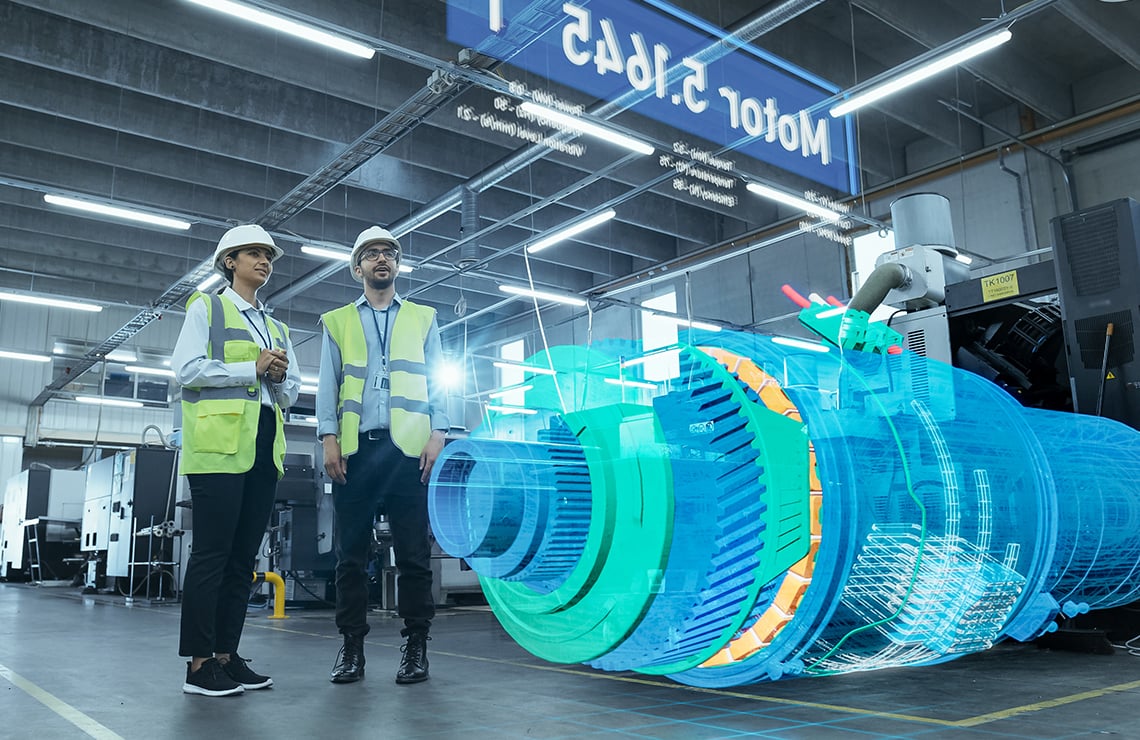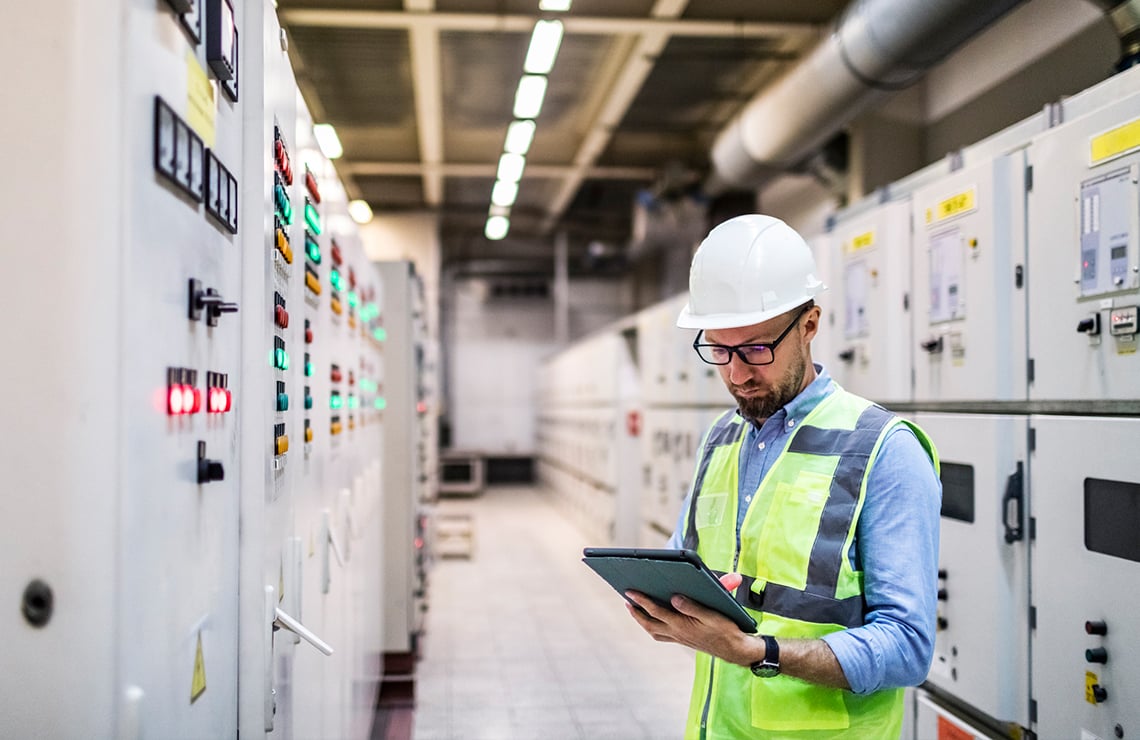
With the growth of Industry 4.0, factories are becoming increasingly digitized, and digital twin technologies are helping engineers bridge the gap between physical infrastructure and digital control. In this article, we'll explore how digital twins increase safety, strengthen supply chain resilience, and drive efficiency across manufacturing systems.
What Is Digital Twin Technology?
A digital twin is a real-time, data-driven replica of a physical object, process, or system. These models use sensors, IoT devices, and advanced analytics to mirror what is happening on the plant floor. Unlike simulations that only estimate scenarios, digital twins are continuously updated with real-time data, providing ongoing insights into equipment status, system behavior, and operational risk.
For manufacturers, this means the ability to detect anomalies, assess wear and tear, run predictive maintenance, and simulate changes before applying them in real environments.
How Digital Twins Enhance Factory Safety
For example, if a digital twin detects rising vibration in a rotary valve, it can simulate possible failure modes and send alerts to maintenance teams. Similarly, process engineers can run 'what-if' analyses to see how equipment changes affect pressure, flow rate, or chemical reactivity.
This ability to visualize risks before they occur helps reduce accidents, extend equipment life, and maintain compliance with safety regulations.

What Are the Benefits of Digital Twin Technology in Manufacturing?
- Improved Safety: Real-time data allows operators to respond proactively to anomalies.
- Predictive Maintenance: Maintenance becomes proactive instead of reactive, reducing downtime.
- Process Optimization: Engineers can test different settings digitally before implementing changes.
- Training and Simulation: Digital twins help new operators learn procedures without interfering with production.
- Energy Efficiency: Simulations allow teams to identify inefficiencies in utility consumption and optimize usage.
Strengthen Resilience Through Simulation
This is especially important for plants with complex processes or those operating in regulated industries. A digital twin of an entire facility can help identify bottlenecks, evaluate redundancy options, and support continuity planning.
For example, during the COVID-19 pandemic, some plants used digital twins to model different shift schedules, space layouts, and ventilation patterns to protect worker safety while maintaining throughput.
Digital Twin Technology in Smart Factories
Digital twin technology for smart factories is more than a trend; it’s becoming a competitive requirement. In an environment where unplanned downtime can cost thousands per minute, having the ability to predict and prevent disruptions is invaluable.
Smart factories often integrate digital twins into their manufacturing execution systems (MES), supervisory control and data acquisition (SCADA) platforms, and enterprise resource planning (ERP) software. This integration enables seamless coordination across operational levels, from the shop floor to the executive dashboard.
As factories adopt more connected devices and automation solutions, the role of digital twin technologies will continue to expand. In fact, many predictive AI tools for manufacturing are built on the foundation of digital twins.

Sustainability and the Benefits of Digital Twin Technology
Sustainability is another area where digital twin technology in manufacturing makes a difference. Simulating the carbon footprint of a process, tracking energy usage, or evaluating the environmental impact of materials becomes easier and more accurate with real-time models.
By optimizing production schedules, reducing waste, and minimizing energy consumption, digital twins help organizations meet sustainability goals without compromising output. For industries under pressure to reduce emissions, this kind of data-driven decision-making is key.
From raw material sourcing to waste stream management, digital twin models give engineers the ability to visualize and improve every stage of the manufacturing lifecycle.
The Role of Digital Twin Technologies in Cybersecurity
Modern factories are increasingly connected to enterprise networks and cloud platforms. With that connectivity comes the challenge of protecting industrial systems from cyber threats.
Digital twins help strengthen cybersecurity posture by modeling the entire system architecture. Engineers can test firewall rules, access controls, and software patches in the digital environment before pushing them live. They can also simulate cyberattacks to evaluate system resilience.
By including cybersecurity scenarios in the virtual environment, organizations can reduce risks and meet compliance frameworks such as NIST, ISA/IEC 62443, and ISO 27001.
How Digital Twins Impact Supply Chain Resilience
Factories don’t operate in isolation; they rely on suppliers, logistics providers, and distribution networks. Digital twin technology allows manufacturers to model supply chains and understand how external variables affect internal operations.
This capability is crucial in times of volatility. If a supplier faces a shortage, the digital twin can simulate alternative sourcing strategies. If shipping delays occur, engineers can assess the impact on delivery schedules and production rates.
Incorporating digital twins into supply chain planning tools allows operations teams to test responses and prepare mitigation strategies long before problems occur.
In Conclusion: A Safer, Smarter Future
The future of manufacturing depends on safer operations, smarter infrastructure, and greater agility. Digital twin technologies enable all three by creating a dynamic link between physical and virtual systems. As more plants modernize their operations, those with advanced digital modeling capabilities will lead in safety, resilience, and performance.
Discover how your facility can improve visibility, reduce risk, and accelerate decision-making. Explore Our Digital Twin Software today.
